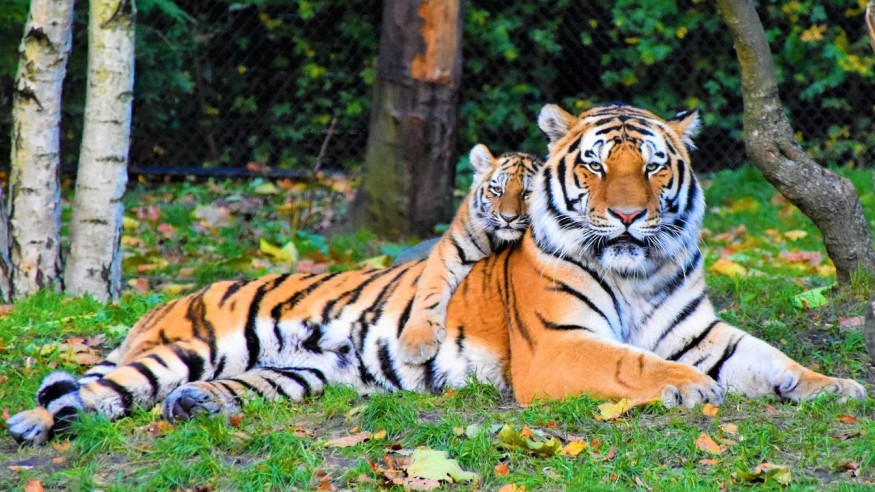For the first time in the world, a veterinarian saves a tiger's eye by performing a surgery that has never been attempted on big cats before to heal an ulcerated cornea.
Living at Shepreth Wildlife Park, England, Ratna the 17-year-old Sumatran tiger first had cataracts from her left eye removed in 2017. Recently the staff at the park noticed her left eye deteriorating to which a specialist eye veterinarian diagnosed as a corneal ulcer.
On the other hand, corneal surgery is commonly performed on domesticated cats and dogs. It has never been performed on any big cat, which proved the diagnostic worrisome for the park staff.
Corneal Ulcer in Cats Explained

The cornea is a clear membrane on the surface of the cat's eyeballs consisting of three layers with specialized skin cells. These layers are very thin and are difficult to identify without the use of a microscope.
Penetration or erosion of the outermost corneal layer known as epithelium is called corneal abrasion or corneal erosion. On the other hand, a corneal ulcer is a much deeper erosion through the entire epithelium up to the stroma, the supportive layer of the cornea.
A corneal ulcer is characterized by absorption of fluid from the tears into the second corneal layer--the stroma, giving a cloudy appearance to the eye.
There are various causes of a cat's corneal ulcer, the most common is trauma from blunt trauma or when a cat rubs its eyes against a rough surface, laceration, or chemical burn.
First-Ever Operation on Tiger Eye a Success
Since Ratna is a member of the big cat family like lions, conventional corneal surgery has never been performed on the animals. Due to their size, they needed bigger doses of anesthetic which has its own sets of risks, especially in bigger animals.
Dr. David Williams, a surgeon front the Queen's Veterinary School Hospital, University of Cambridge performed the first-ever operation and was completed in the exact same way as domesticated small animals other than the increased dose of anesthesia.
The operation is known as the first-ever "hood graft" performed on a big cat. Williams hypothesized that post cataract removal, Ratna may have stuck her eye on shards of bamboo inside her enclosure.
After 2 months of post-surgery monitoring, daily eye drops, and check-ups Ratna has been declared as fully recovered.
Ratna and her daughter were moved to Shepreth in 2019 and were well-known for enjoying sitting on top of a platform in their enclosure. Unfortunately, when her cornea begun taking a turn for the worst, her coordination was the first to suffer, and getting to and from the platform became an obvious struggle.
Williams told BBC that Ratna is now fine and looks as if nothing ever happened. Ratna is now back to her old self enjoying her enclosure with her daughter. Although she hasn't visited her normal platform spot park officials are positive that she'd be back to her usual antics with her daughter in no time.
RELATED ARTICLE : Moon Bears Rescued from Horrific Bear Bile Farming Trade Will Receive the Best Care
Check out more news and information on Animal Welfare on Science Times.
© 2025 ScienceTimes.com All rights reserved. Do not reproduce without permission. The window to the world of Science Times.












